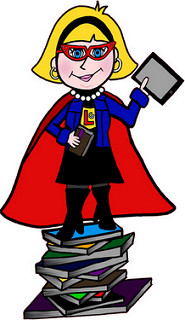 |
| Loggin on to AR |
"Where are you all headed?" I asked.
Aria was the spokesperson. "We are going to the computer lab to take an AR test!"
"Wonderful! Can I come along?" And with that, we were off.
 |
| Finding the Book Quiz |
AR or Accelerated Reader is a "reading comprehension program that monitors, manages and tests elementary students." The students read the book, and then take a short comprehension quiz on the computer. The company suggests they choose a book by looking at those available on the list. (I ran across a student in the library earlier who had read a book, but a quiz had not been generated for that book. She was discouraged, so it might be good to check first!)
We settled in at the computer lab and Aria signed in and searched for the book she had read. It was there! She began to answer the questions--after trying to con me into reading for her, :-) I felt the questions were just slightly above knowledge level, but certainly not higher-level thinking skills--which is one of the cons of the program.
 |
| Look at my Flower! |
Aria quickly finished the quiz and was very excited to show me her "flower" that was almost complete. With that done, she signed out and was off to her classroom.
On the way back to my original errand, I passed a chart in the hall which tracked the number of AR books read by students in the various classrooms. The number of books varied widely.
In recent years, the emphasis in reading instruction has shifted to teaching skills. This has increased the reading instruction time, but has not increased the amount of time that children actually practice reading. Possibly AR is a way to keep that focus?
It is certainly helpful to the teacher to be able to have a computer program track the reading and basic comprehension for each student. Growing the flower was obviously motivating to this first grade child! Anytime we can get a child to read a book in this world full of technology is a plus! Is this technology of taking a quiz on every book enhancing learning? That is the question isn't it?
One interesting side note: I read a book aloud to the class and then they were told that they could take the AR test. They wanted to look at the book and it began to make its way around the room. If the goal is only to test recall then they should not look at the book, right? But what other skills are being developed by looking at the book? When you answer questions at the end of a chapter (for instance) do you look back? Do you learn additional things while you are looking back? It all goes back to "What is your objective?" How can you take a technology tool that was created for simple recall and raise the level of learning?????















